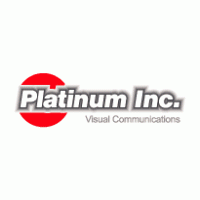

The steps include researching the individual, locating and understanding key passages for that person, and telling others what you’ve learned. This simple workflow guides you through the basic steps of examining a particular person in a biblical narrative. Open a Biblical Person Study workflow in Logos Since Bible study is more involved than Bible reading, this workflow includes reading the passage several times, making observations on the passage as a whole, understanding who the characters are and what they do, identifying the main ideas and themes, finding key terms, and telling others what you learned.
#Logos platinum free series#
This workflow guides you through a series of steps to help you study a passage of Scripture. Open a Basic Bible Study workflow in Logos You can get more workflows by purchasing them in the Logos store or (in many cases) by upgrading your Logos package. Note: The following describes some of the basic workflows included in most Logos packages. For example, notes from a Passage Exegesis Workflow on John 15:1-17 will be anchored to the book of John. Passage-based workflow notes are also anchored to the biblical book. Open the Notes Tool Navigation Menu and type workflow in the filters search, or scroll down the list of filters until you find Anchor > Workflow. You can also use filters to find all of your workflow notes in the Notes Tool. You can rename notebooks however you choose using the Notes Tool. So, notes from a Passage Exegesis workflow on John 15:1-17 will be saved to a notebook titled “Passage Exegesis | John 15:1-17” by default. By default, the notebook title will contain the name of the workflow, and may also display the passage being considered. Some steps in your workflow may invite you to add notes, so you can save your comments and observations as you proceed.Įach note field is saved as a separate note within a notebook with an easily identifiable name.Grey circles indicate steps you’ve skipped. If a step has several sub-steps below it, the workflow will display your progress by filling a portion of the ring to the right of the step’s name. These change to check marks after you click complete and proceed to the next step. Orange circles mark your current location in the workflow. Click the undock icon to open this content in a new panel. Some guide sections, however, can be accessed from within the workflow itself.
#Logos platinum free windows#
Note: Links to tools and resources typically open new panels, tabs, or floating windows depending on the type of resource being accessed. You can close the Workflow at any point and Logos will remember where you left off so you can pick right back up again later. Sections That Require Features You Don't HaveĬlick Guides > Workflows, then select a workflow from the list. Workflows available in Logos include Basic Bible Study, Biblical Person Study, Biblical Place Study, Expository Sermon Preparation, Lectio Divina, and Passage Exegesis.Įnter the person, place, or passage you want to study in the search box and press Enter.Ĭlick Continue when you finish one step and want to proceed to the next.Started workflows will be automatically added to the Dashboard on your Home Page for quick access. They are not available in the Logos Mobile App. Note: At present, workflows are only available in the Logos Desktop and Logos web app. Workflows offer guided instructions for a range of tasks, like family worship, sermon preparation, word studies, and more. They help you to study the context of a passage, compare translations, discover key terms, read excerpts from top resources, and capture your thoughts in one place. Logos workflows guide you through your investigation of biblical passages, words, or topics step by step.


 0 kommentar(er)
0 kommentar(er)
